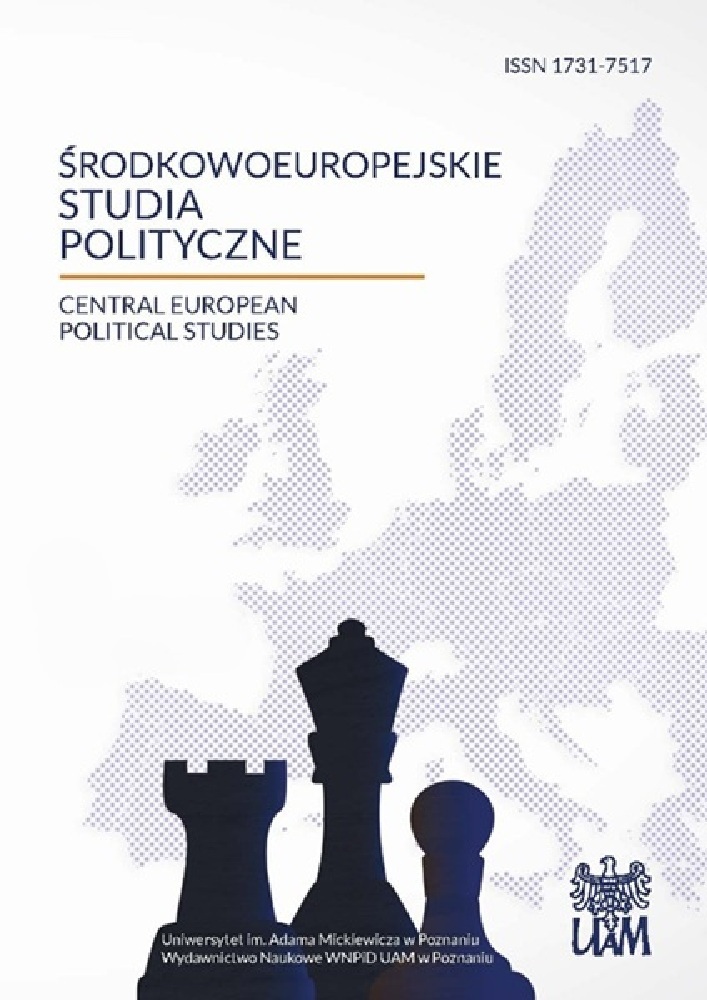Abstrakt
This paper summarizes the key features of the German print media news coverage on Poland throughout the timeframe of the Polish EU Presidency term in 2011. Results stem from a quantitative content analysis of three daily newspapers and one newsmagazine that were analyzed over a timeframe of 7 months from June 2011 to January 2012. Being one of the founding countries of the EU, Germany is one of the “EU-heavyweights”, regarding its population size and its political standing. Furthermore, compared to other EU members, the country has a rather supportive position towards its own EU membership as well as to EU-related matters. This position was slightly shaken more recently by the EU financial crisis, but remains more positive still than in many other EU countries. However, Germany also has a very special and not always conflict-free relationship to its neighboring country Poland. Both aspects are crucial to bear in mind when the German news coverage on Poland during the presidency term is taken into view. The paper shows that the Polish EU presidency did not change the overall thematic focus of the German news coverage on Poland. The frame of perceptions of Poland shifted towards a more EU-related dimension only slightly and temporarily, but overall, deeper-rooted frames of perception as well as characteristic news factors shaped the German news coverage on Poland.
Bibliografia
Asmuss B., Ulrich B., Koch M. (eds.) (2009), 1.9.39: Deutsche und Polen: Abgründe und Hoffnungen, Sandstein, Dresden.
Boldt T. D. (2012), Die stille Integration: Identitätskonstruktionen von polnischen Migranten in Deutschland, Biographie- und Lebensweltforschung, Vol. 11, Campus, Frankfurt am Main.
Chang T. K., Lee J. W. (1992), Factors Affecting Gatekeepers’ Selection of Foreign News: A National Survey of Newspaper Editors, “Journalism Quarterly”, no. 69(3), pp. 554–561.
Galtung J., Ruge M. H. (1965), The Structure of Foreign News. The Presentation of the Congo, Cuba and Cyprus Crisis in Four Norwegian Newspapers, “Journal of Peace Research”, no. 2, pp. 64–91.
Gatzke N. (2010), Polenbild in Deutschland: Wandel und Kontinuität – von Polen als Gegenbild der Aufklärung bis zur EU-Reformdebatte (Magisterarbeit), Universität Potsdam, Potsdam, Retrieved from http://www.ssoar.info/ssoar/handle/document/29050.
Hans-Bredow-Institut für Medienforschung (ed.) (2009), Internationales Handbuch Medien (28th ed.), Nomos, Baden-Baden.
Lawaty A., Orłowski H. (eds.) (2003), Deutsche und Polen. Geschichte, Kultur, Politik, München.
Ociepka B., £ada A., Æwiek-Karpowicz J. (2008), Die Europapolitik Warschaus und Berlins in der deutschen und polnischen Presse. Ein Forschungsbericht, Instytut Spraw Publicznych,Warschau, Retrieved from http://www.isp.org.pl/files/4184425580093185001213726958.pdf.
Ostgaard E. (1965), Factors Influencing the Flow of News, “Journal of Peace Research”, no. 2, pp. 39–63.
Risse-Kappen T. (2010), A Community of Europeans? Transnational Identities and Public Spheres, Cornell University Press, Ithaca, NY.
Rosengren K. E. (1974), International News: Methods, Data and Theory, “Journal of Peace Research”, no. 11, pp. 145–156.
Shoemaker P. J., Cohen A. A. (eds.) (2006), News around the World: Content, Practitioners, and the Public, Routledge, New York.
Staab J. F. (1990), The Role of News Factors in News Selection: A Theoretical Reconsideration, “European Journal of Communication”, no. 5(4), pp. 423–443.
Statistisches Bundesamt (2012), Bevölkerung und Erwerbstätigkeit: Bevölkerung mit Migrationshintergrund – Ergebnisse des Mikrozensus 2011 (Fachserie 1 Reihe 2.2), Wiesbaden.
Stevenson R. L., Cole R. R. (1984), Issues in Foreign News, in: Foreign news and the new world information order, (eds.) R. L. Stevenson, D. L. Shaw, The Iowa State University Press, Ames, pp. 5–20.
Szarota T. (2010), Stereotype und Konflikte: Historische Studien zu den deutsch-polnischen Beziehungen, “Historische Dialoge”, Vol. 1, Osnabrück: fibre.
Weber P. (2010), No News from the East? Predicting Patterns of Coverage of Eastern Europe in Selected German Newspapers, “International Communication Gazette”, no. 72(6), pp. 465–485.
Wilke J., Heimprecht C., Cohen A. A. (2012), The Geography of Foreign News on Television: A Comparative Study of 17 Countries, “International Communication Gazette”, no. 74(4), pp. 301–322.
World Editors Forum/World Association of Newspapers (ed.) (2009), World Press Trends 2008, Paris.
Wouters R. (2011), The Nature of Foreign News: Conceptual Considerations about Analysing Foreign News Over Time, in: News in Europe, Europe on news, (ed.) A. Stępińska, Logos, Berlin, pp. 43–62.
Wu H. D. (2000), Systemic Determinants of International News Coverage: A Comparison of 38 Countries, “Journal of Communication”, no. 50(2), pp. 110–130.
Zernack K. (1991), Preußen – Deutschland – Polen. Aufsätze zur Geschichte der deutsch-polnischen Beziehungen,Wolfram Fischer und Michael Müller, Berlin.
Licencja
Copyright
© 2013, Uniwersytet im. Adama Mickiewicza w Poznaniu, Wydawnictwo Naukowe Instytutu Nauk Politycznych i Dziennikarstwa
OPEN ACCESS
